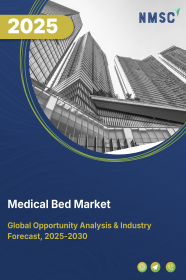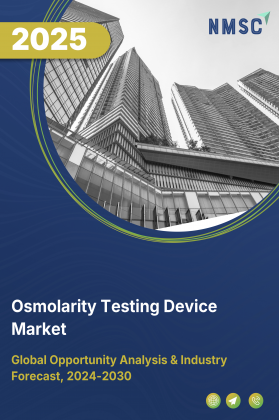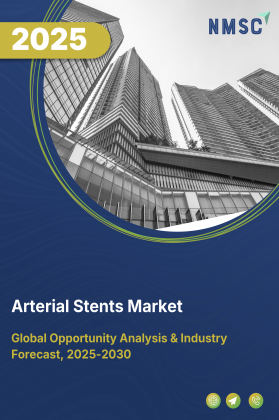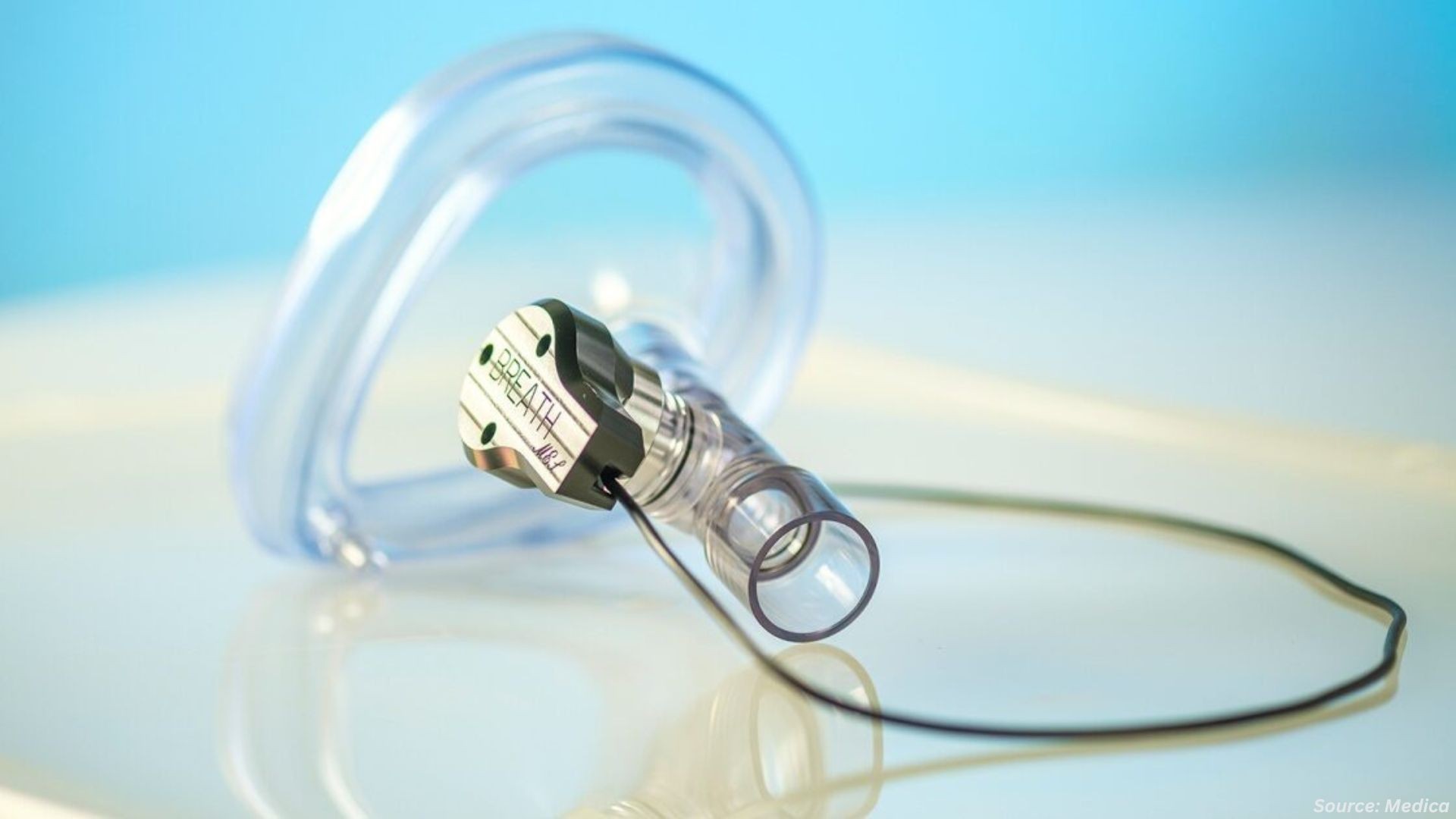
Medical Bed Market by Product Type (Manual Beds, Electric Beds, and Others), by Material (Metal Beds, Wooden Beds, and Others), by Bed Type (General Purpose, Critical Care, and Others), by Bed Capacity (Standard, High, and Ultra-High), by Mobility (Fixed, Mobile, and Others), by Application (Intensive and Non-Intensive Care), by Sector (Private and Public Institutions), and by End User (Hospitals, Home Care, and Others) – Global Opportunity Analysis and Industry Forecast, 2025–2030
Industry Overview
The global Medical Bed Market size was valued at USD 4.31 billion in 2024 and is predicted to reach USD 4.56 billion by the end of 2025. The industry is predicted to reach USD 6.00 billion by 2030 with a CAGR of 5.7% from 2025 to 2030.
The market is witnessing steady growth, primarily driven by the expanding aging population and the rising prevalence of chronic illnesses that necessitate prolonged care. Increased government investments in healthcare infrastructure are further accelerating demand for advanced medical beds across hospitals and long-term care settings.
Nevertheless, stringent regulatory requirements continue to pose challenges, frequently delaying product approvals and hindering innovation. Despite these constraints, the emergence of smart, connected beds offers a compelling growth opportunity, aligning with the healthcare industry’s transition toward digitalization and patient-centered care.
Surging Aging Population Across the Globe Fuels Market Growth
The rapid growth in the aging population is a key factor propelling the expansion of the market. As the global elderly population continues to rise, there is an increasing need for specialized medical beds equipped with advanced features to support mobility, safety, and long-term care.
According to the 2024 U.S. Census Bureau, the number of individuals aged 65 and above in the United States reached 59.2 million in 2023, highlighting the growing demand for healthcare infrastructure tailored to geriatric care. This demographic shift is intensifying the need for high-quality medical beds across hospitals, rehabilitation centers, and home care settings.
Increase in Chronic Illnesses and Surgical Interventions Fuels the Medical Bed Market Demand
The rising prevalence of chronic conditions such as cardiovascular diseases, diabetes, cancer, and respiratory illnesses is significantly boosting the demand for medical beds. These conditions require extended hospital stays and post-operative care which necessitate advanced and comfortable medical bedding solutions.
According to PAHO, noncommunicable diseases cause 41 million deaths annually, accounting for 71% of global deaths. This growing disease burden is driving the need for advanced beds such as electric and smart models that enhance patient care and operational efficiency, which ultimately leads to the growth of the market.
Rising Government Investment in Healthcare Industry Boosts the Market Expansion
Government healthcare expenditure is on the rise globally, directly impacting the demand for hospital infrastructure, including medical beds. In the United States, the federal government allocated $1.9 trillion to healthcare in FY 2024, accounting for 27% of total federal spending, making it the largest spending category. This surge in public healthcare investment is fueling the expansion and modernization of hospitals and long-term care facilities. As a result, the demand for advanced medical bed such as electric, ICU, and bariatric beds is growing to meet the needs of newly equipped and upgraded facilities.
Regulatory Challenges Restrain the Medical Bed Market Expansion
Stringent regulatory requirements pose a significant restraint on the medical bed sector. Agencies like the U.S. Food and Drug Administration (FDA) and the European Medicines Agency enforce strict standards for safety, sterilization, and quality, which delay product approvals and complicate market entry. These regulatory hurdles, as noted by the FDA, require extensive testing and documentation, slowing innovation and adoption of new medical bed technologies. Addressing these challenges through streamlined regulatory processes is essential for the industry’s sustained growth.
Introduction of Smart Bed Creates Future Market Opportunities
The introduction of LINET’s new generation of beds highlights a significant future opportunity in the integration of medical beds into broader smart care ecosystems. These advanced beds feature enhanced ergonomics, automatic positioning, and connectivity with other medical devices, allowing for seamless patient monitoring and efficient ICU workflows.
As hospitals increasingly prioritize digital health infrastructure and real-time patient data, demand for such multifunctional, connected beds is expected to surge especially in critical care settings positioning smart ICU beds as a central node in future hospital innovation.
Market Segmentation and Scope of the Study
The medical bed market report is segmented by product type, material, bed type, bed capacity, mobility, application, sector, end user, and region. By product type, the market includes manual beds, electric beds, smart beds, and others. Powered bed is further bifurcated into fully electric beds and semi-electric beds. By material, the segmentation comprises metal beds, wooden beds, composite beds, plastic/polymer beds, and others. By bed type, the market includes general purpose beds, critical care beds, surgical beds, pediatric beds, therapeutic beds, and others. By bed capacity, the market is segmented into standard weight capacity (up to 250 kg), high weight capacity (250–450 kg), and ultra-high weight capacity (above 450 kg). By mobility, the market includes fixed beds, mobile beds, wall-mounted and others. By application, the segmentation includes intensive care beds and non-intensive care beds. By sector, the market is divided into private medical institutions and public medical institutions. By region, the market covers North America, Europe, Asia-Pacific, and the Rest of the World.
Geographical Analysis
North America holds the dominant medical bed market share, driven by its well-established healthcare infrastructure, rapid adoption of advanced technologies, and the strong presence of leading manufacturers such as Stryker and Baxter. A notable example is Stryker’s launch of the ProCeed hospital bed in February 2025. This innovation underscores the region’s commitment to enhance patient care through practical, tech-enabled solutions.
This product is designed to address rising challenges such as increased nursing staff turnover and widespread burnout, the ProCeed bed combines durability, ease of cleaning, and user-friendly features to support overstretched healthcare teams. As hospitals face mounting pressure to maintain high standards of care with limited staff, the demand for reliable and ergonomic medical beds like the ProCeed is set to rise significantly across North America.
In Europe, the market is significantly supported by the EU4Health Programme, the fourth EU health initiative running from 2021 to 2027. Introduced as a strategic response to COVID-19 and broader healthcare challenges, EU4Health allocates approximately USD 5.5 billion to improve and strengthen health systems across the Union.
Key focus areas include protecting citizens from serious cross-border health threats, enhancing the availability and affordability of medical devices including medical beds, and reinforcing national healthcare infrastructure. These efforts are expected to boost demand for advanced medical beds, particularly in elderly care, rehabilitation, and emergency preparedness.
In the Asia-Pacific region, the market is expanding rapidly due to the dual impact of an aging population and rising medical tourism. The number of older persons in Asia and the Pacific is projected to more than double from 630 million in 2020 to around 1.3 billion by 2050, thus, driving demand for long-term care, home-use, and geriatric beds.
Simultaneously, countries like India, Thailand, and Malaysia are becoming global medical tourism hotspots, encouraging private hospitals to invest in high-quality, technologically advanced medical beds to cater to international patients seeking affordable yet specialized care.
In the Rest of the World (RoW) region, which includes Latin America, the Middle East, and Africa, the market is driven by ongoing efforts to modernize healthcare infrastructure and expand critical care capacity. Countries in these regions are investing in new hospitals and upgrading existing facilities to meet rising healthcare demands.
Additionally, support from international health organizations is enhancing access to essential medical equipment, including medical beds, especially in underserved and remote areas. This combination of public investment and global aid is steadily boosting the adoption of medical beds across RoW markets.
Strategic Analysis of the Companies
Key players in the medical bed industry are actively deploying strategic partnerships, advanced technology integration, and product diversification to strengthen their market share and meet evolving healthcare demands.
-
In June 2025, PROMA REHA participated in the Medlab West Africa international trade fair held in Lagos, Nigeria, a prominent healthcare event that attracted professionals from across the region. The event provided a strategic platform to introduce advanced medical solutions to new markets. The company’s GENEO Green Line hospital bed was showcased and received strong interest and positive feedback from visitors and local distributors. The emphasis on modern, sustainable healthcare solutions resonated well across the African continent.
-
In November 2024, LINET Group acquired the French company Domalys, enhancing its product portfolio with ergonomic furniture and advanced smart fall prevention technologies. This acquisition expands LINET’s offerings across hospitals, social care, and home care settings, while also boosting its innovation capabilities in IoT-based solutions.
-
In April 2024, GF Health Products, Inc. acquired the majority of assets from Transfer Master Products, Inc. (TMP), a company with over 30 years of experience in designing and manufacturing hi-low adjustable beds for home and healthcare environments. This acquisition enables Graham-Field to broaden its bed and sleep support system portfolio beyond its existing industry-leading brands.
Key Benefits
-
The report provides quantitative analysis and estimations of the market from 2025 to 2030, which assists in identifying the prevailing industry opportunities.
-
The study comprises a deep dive analysis of the current and future medical bed market trends to depict prevalent investment pockets in the sector.
-
Information related to key drivers, restraints, and opportunities and their impact on the market is provided in the report.
-
Competitive analysis of the players, along with their market share is provided in the report.
-
SWOT analysis and Porters Five Forces model is elaborated in the study.
-
Value chain analysis in the market study provides a clear picture of roles of stakeholders.
Medical Bed Market Key Segments
By Product Type
-
Manual Beds
-
Electric Beds
-
Fully Electric
-
Semi-Electric
-
Smart Beds
-
Others
By Material
-
Metal Beds
-
Wooden Beds
-
Composite Beds
-
Plastic/Polymer Beds
-
Hybrid Material Beds
By Bed Type
-
General Purpose Beds
-
Critical Care Beds
-
Surgical Beds
-
Pediatric Beds
-
Therapeutic Beds
-
Maternity Beds
-
Pediatric Beds
-
Bariatric Beds
-
Neonatal Beds
-
Geriatric Beds
-
Others
By Bed Capacity
-
Standard Weight Capacity (Up to 250 kg)
-
High Weight Capacity (250–450 kg)
-
Ultra-High Weight Capacity (Above 450 kg)
By Mobility
-
Fixed Beds
-
Mobile Beds
-
Wall-Mounted/Foldable Beds
-
Portable/Field Beds
By Application
-
Intensive Care Beds
-
Non-Intensive Care Beds
By Sector
-
Private Medical Institutions
-
Public Medical Institutions
By End-User
-
Hospitals
-
Home Care Settings
-
Ambulatory Surgical Centers (ASCs)
-
Others
By Region
-
North America
-
The U.S.
-
Canada
-
Mexico
-
-
Europe
-
The UK
-
Germany
-
France
-
Italy
-
Spain
-
Denmark
-
Netherlands
-
Finland
-
Sweden
-
Norway
-
Russia
-
Rest of Europe
-
-
Asia Pacific
-
China
-
Japan
-
India
-
South Korea
-
Australia
-
Indonesia
-
Singapore
-
Taiwan
-
Thailand
-
Rest of Asia Pacific
-
-
RoW
-
Latin America
-
Middle East
-
Africa
-
Key Players
-
Baxter
-
Narang Medical
-
PROMA REHA, s. r. o.
-
Arjo
-
LINET Group SE
-
Meyosis
-
Gita Mediquip Pvt Ltd
-
Famed Żywiec Sp. z o.o.
-
Paramount Bed Co., Ltd.
-
Invacare Corporation
-
Antano Group
-
Besco Medical Co. Ltd.
-
GF Health Products, Inc.,
-
Stryker Corporation
-
Umano Medical Inc.
REPORT SCOPE AND SEGMENTATION:
|
Parameters |
Details |
|
Market Size in 2025 |
USD 4.56 Billion |
|
Revenue Forecast in 2030 |
USD 6.00 Billion |
|
Growth Rate |
CAGR of 5.7% from 2025 to 2030 |
|
Analysis Period |
2024–2030 |
|
Base Year Considered |
2024 |
|
Forecast Period |
2025–2030 |
|
Market Size Estimation |
Billion (USD) |
|
Growth Factors |
|
|
Countries Covered |
28 |
|
Companies Profiled |
15 |
|
Market Share |
Available for 10 companies |
|
Customization Scope |
Free customization (equivalent up to 80 working hours of analysts) after purchase. Addition or alteration to country, regional, and segment scope. |
|
Pricing and Purchase Options |
Avail customized purchase options to meet your exact research needs. |

















 Speak to Our Analyst
Speak to Our Analyst

























